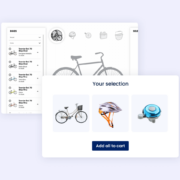The acceleration of digital maturity across industries, regardless of end-user, continued to push boundaries and break the status quo in 2021. Whether it’s a B2B buyer preferring a self-service environment for configuration or a consumer looking for the right product to fit their specific needs, manufacturers and retailers stepped up to provide exceptional customer experiences aimed at taking the guesswork out of decision making and ensuring the optimal outcome for a purchase.
Zoovu’s customers launched and delivered 10,000s conversational commerce experiences throughout 2021. Each of these experiences sought to simplify the customer journey and enable customers to feel confident in their purchases, whether it was sleeping bags for camping or complex industrial products like air compressors, no customer would be left feeling unsupported in identifying what was best for them.
We’ve identified and deemed 5 experiences as “best-in-class” based on:
- Overall Experience: exceptional ease of use, design, attention to personalization and details, and easy to understand recommendations
- Integration: outstanding entry point (i.e., a link to access the experience) strategy across the website, bypassing certain questions if they are void based on the user being on specific category pages to streamline assistance
- Recommendations: showcasing how to make technical products approachable and easy to understand, correlating technical specs to needs for accurate recommendations
- Advice: using digital assistance to provide solution-based advice on their product category, educating customers with questions-and-answers and results
- Configuration & Bundling: an interactive approach to configuring complex products or creating a customized set of products with visual configuration, ensuring compatibility
Best-in-Class Examples of Conversational Commerce and Web Discovery Experiences in 2021:
1. Overall Experience: Gerber’s “My Feeding Finder”
Between feedings, tummy time, and naps parents can’t spend hours figuring out the perfect combination of formula and food for their newborns and infants, that’s why the #1 brand in baby food and care developed their “My Feeding Finder.”
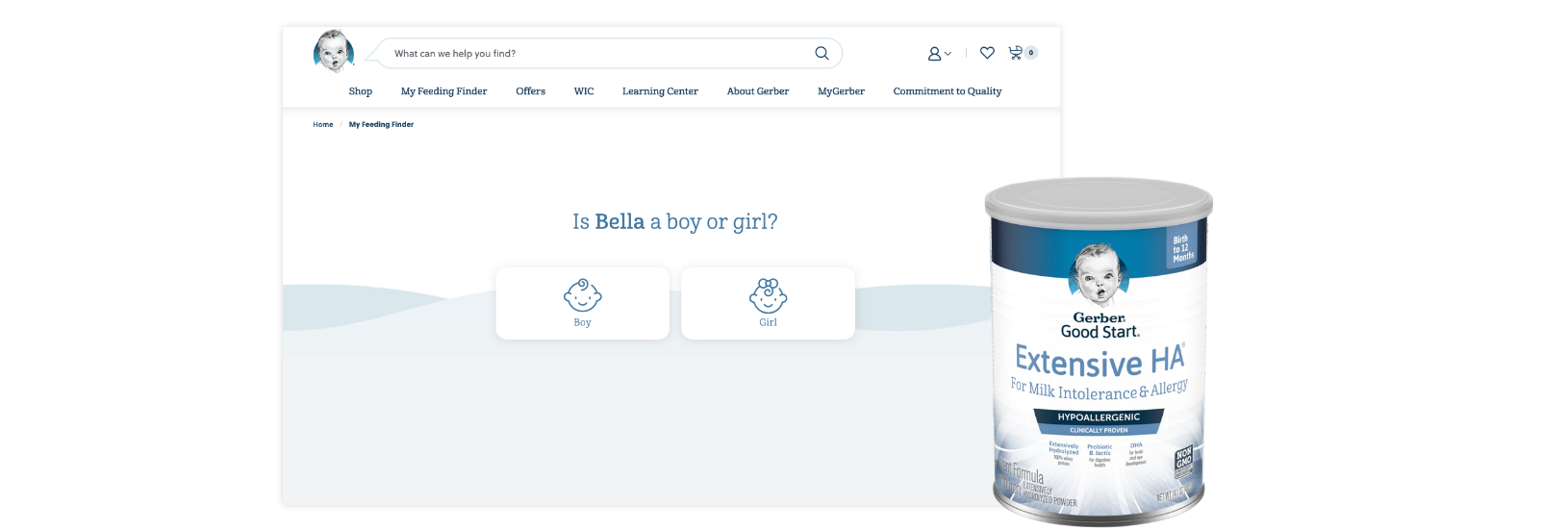
There’s a multitude of reasons why Gerber is best-in-class for overall experience, but we are the most impressed with:
-
- Attention to personalization (using the baby’s name throughout the experience) and needs-based advice (i.e., if you had a C-section, a baby may have different needs)
- On brand design and ease of conversation flow and transition
- Needs-based, tailor-made recommendations that simplify the purchase of formula and food for babies to ensure they receive the nutrients they need
2. Integration – ROSE Bike Finder
If you want to ensure conversational experiences are used often and generate revenue and conversions for the business, it needs to be noticeable, accessible, and widely placed across a website. ROSE Bikes, a German manufacturer, has this strategy executed perfectly. The iconic cycling brand integrates multiple entry points to their signature “Bike Finder” across their site.
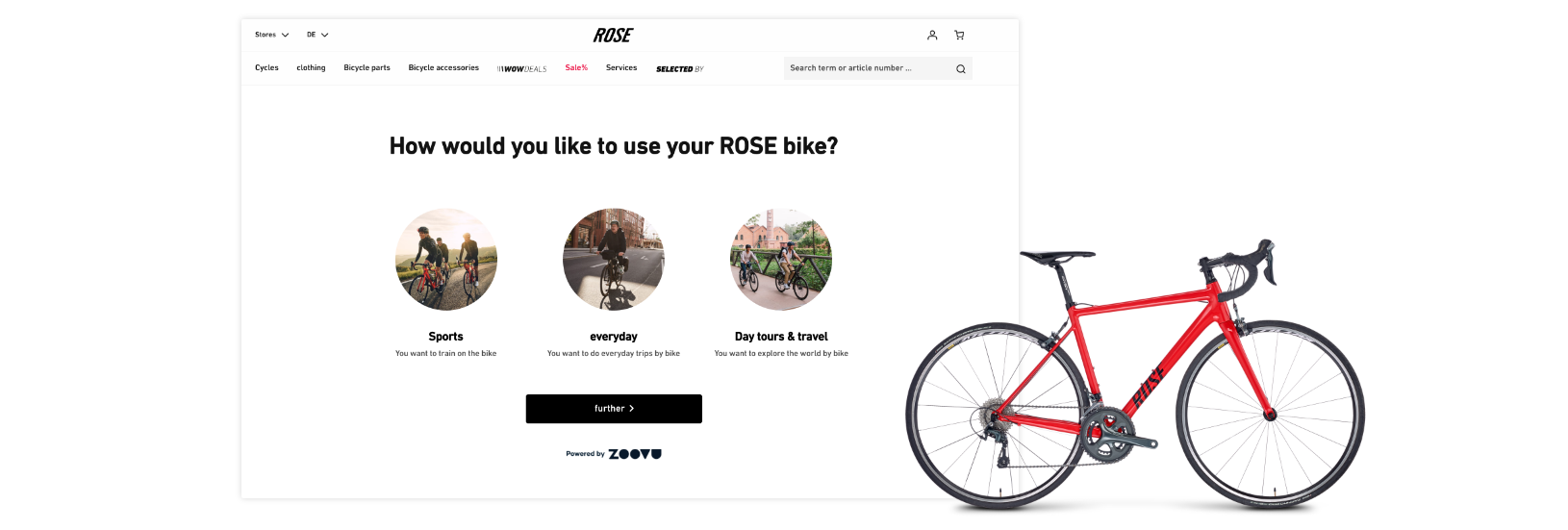
Bikes and accessories vary widely based on individual requirements, expertise, and intended use, which makes buying one a daunting experience. ROSE ensures all customers can easily access their “Bike Finder” by adding entry points in key areas with a few tricks that show they care about streamlining the experience:
- Entry points on the homepage, banners, footer
- Using presets on category pages (i.e., mountain bike) to bypass specific questions that can be answered based on where the customer is on the site
3. Recommendations – Harvey Norman by Microsoft “PC Selector”
The average consumer doesn’t know the difference between RAM or CPU, and they shouldn’t have to be experts in the technical specifications of a computer to purchase the right one. Global multi-category retailer Harvey Norman and Microsoft leverage a “PC Selector” to make purchasing a technically complex product simple. This creates a straightforward experience by bypassing the jargon and getting to the important questions to generate recommendations.
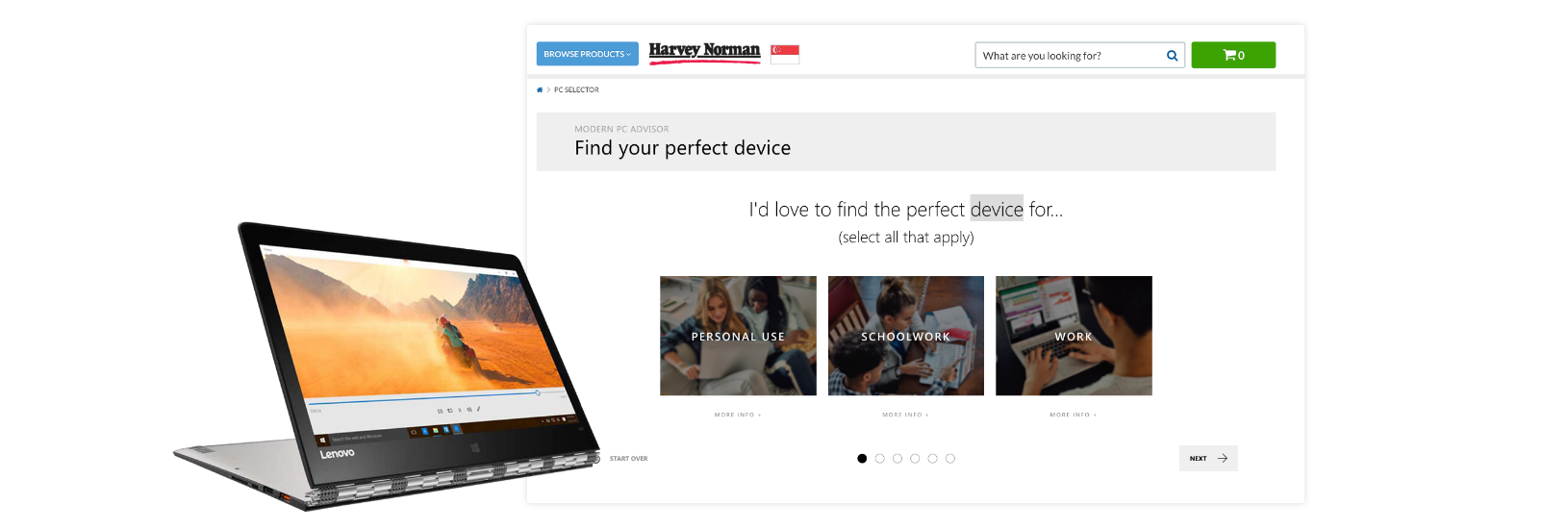
Whether the customer is in Slovenia or Singapore, Harvey Norman and Microsoft showcase how retailers and brands can partner together to elevate and simplify buying electronics by asking questions based on the intended use of the device (i.e., for work or for gaming?) and correlating their recommendation pages to match:
- Using easy to understand elements of a computer (i.e., lightweight = good for a frequent traveler or work)
- Providing a clean layout to not overwhelm the customer
4. Advice – UMZU “Supplements Assistants”
If you’ve ever gone to look at the herbal or vitamin supplement section of a pharmacy, you probably are feeling immediately overwhelmed by the thought. Does anyone really know the difference between vitamin B6 and B12? Enter: UMZU a US-based direct-to-consumer supplement brand that empowers customers with their “Supplement Assistant” by leading with education and advice.
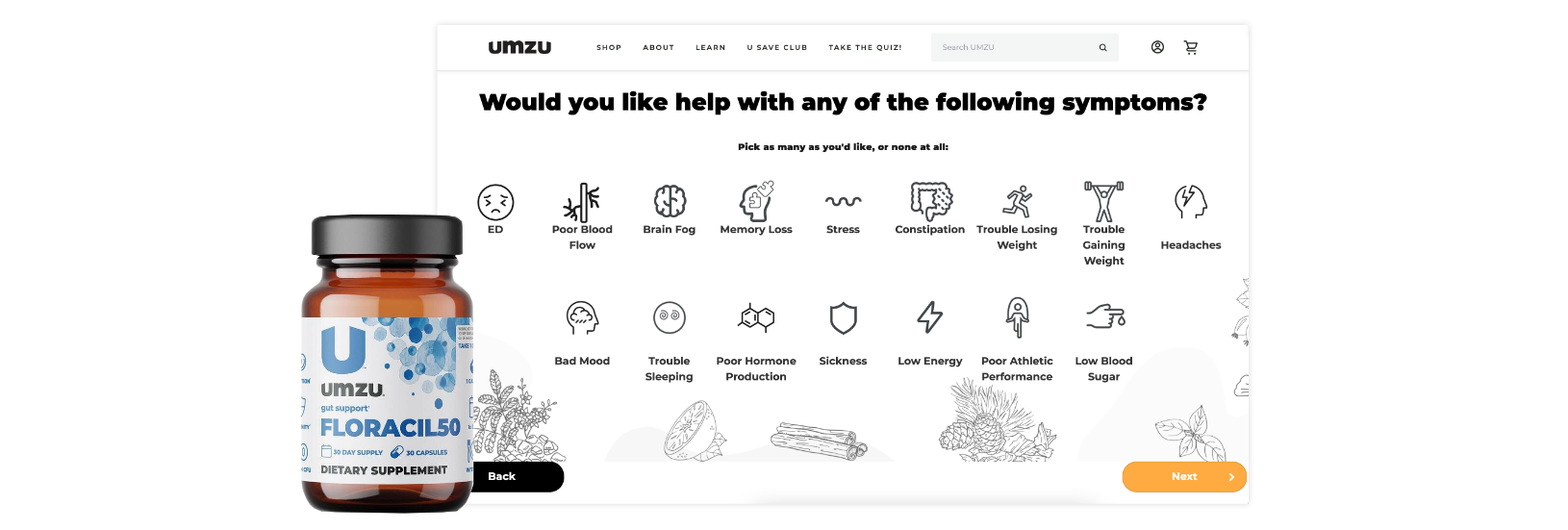
By combining light-hearted graphics and relatable questions, UMZU gets to the bottom of the right supplement regiment for each individual customer. They do this by:
- Taking sex, age, and knowledge of supplements into account for optimal advice and recommendations
- Allowing customers to pick multiple symptoms they are looking for help with
- Bringing levity to sometimes awkward questions (the ones you don’t want to ask about in-real-life)
5. Configuration & Bundling – B/S/H “Kitchen Appliance Planner”
When building a new kitchen, the appliances need to feel cohesive and be compatible. Sifting through product pages to pick out separate appliances and hoping it’ll come together is not exactly enjoyable nor efficient. What if it felt more like building your own world? As part of their robust conversational commerce strategy, B/S/H launched their “Kitchen Appliance Planner” to enable product configuration that feels like you’re playing the Sims game.

The configurator lets buyers flexibly adapt and visualize a suite of products while helping manufacturers provide a self-service environment. B/S/H “Kitchen Appliance Planner” stands out for numerous reasons:
- Clean, sleek design with hot spots to customize what kitchen appliances they need or may want to create their ultimate kitchen
- Ensures compatibility if appliances interact with each other
- Delivers a memorable and engaging experience where customers feel empowered to customize to their needs
As outlined, it’s clear each of these brands or retailers are committed to delivering exceptional customer experiences on their digital channels that ensure their customers can find what they’re looking for with ease and not be overwhelmed with choice or technical jargon. They also show a deep understanding for their audience:
- Gerber uses the baby’s name throughout the Feeding Finder to bring the human element back into the purchase
- Harvey Norman PC selector knows customers will have different needs for a PC and it shouldn’t be hard to the right one.
Conversational commerce at its core is about engaging, advising, and recommending the right product (or set of products) based on each individual customers unique needs and finding meaning in product data to surface relevant products.

